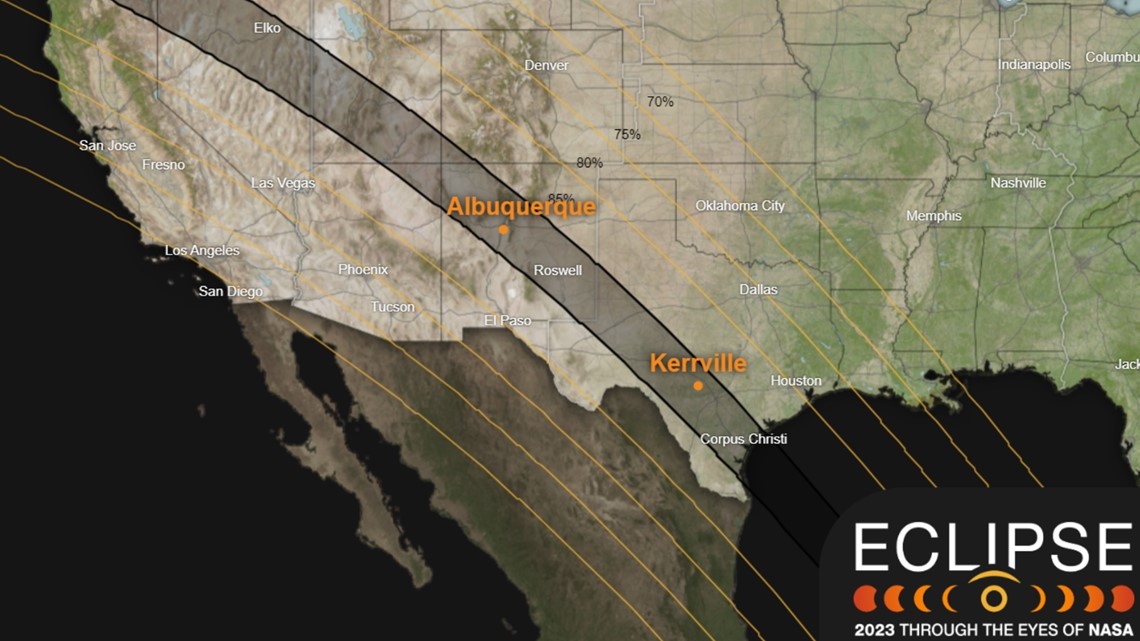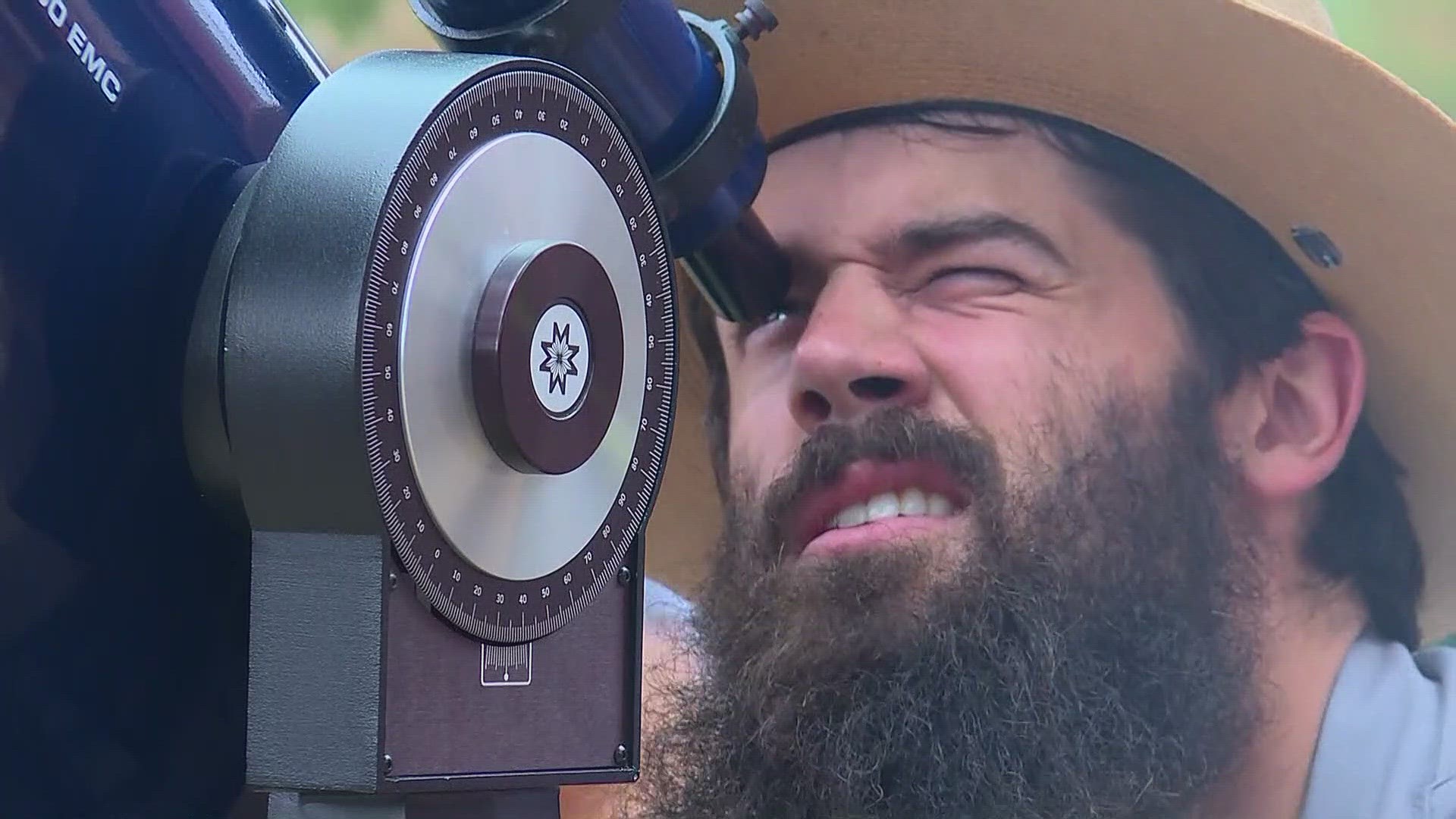PHOENIX — Turn your eyes to the sky this October, because there are some stunning celestial events on the way for us. The best part? You won't even need to leave your backyard to see most of them!
Here's where and when to catch some of the upcoming events:
The 2023 Annular Eclipse
Is there anything more impressive than a solar eclipse? The "iconic ring of fire" has inspired stories around the world for all of human history. After the 2017 solar eclipse's shadow moved across the U.S., traveling to see one became even more popular.
The next one is set to make its way across the country on Saturday, Oct. 14, 2023. Unfortunately, Phoenix isn't in the direct path of the eclipse, but we are still going to see about 75-80% of the sun obscured, according to NASA.
An annular solar eclipse happens when the moon passes directly between the Earth and the sun, but doesn't completely cover the sun from our perspective. This casts a shadow on the Earth's surface, and people in the full shadow will see the sun as a bright ring or "annulus" around the moon.


Remember, don't look directly at a solar eclipse. Even if the sun appears darker, and looking at it doesn't hurt, harmful radiation still makes it to Earth's surface and can easily damage your eyes. Instead, try a pair of solar eclipse glasses to safely view the event.
If you want to see the full annular eclipse, you can drive east to Albuquerque, New Mexico, or north into southern Utah.
The Arizona Science Center is holding a free viewing party from 7:45 a.m. until noon on the day of the eclipse. The Earth & Space Expedition Center is holding a similar event from 8 a.m. until 11:30 a.m. on the same day.
If you're in Flagstaff that day, you can celebrate the eclipse at Lowell Observatory! They'll have guest speakers and complimentary eclipse viewing glasses, as well as a livestream of views from the observatory. Doors open at 7:30 a.m.
The Draconid Meteor Shower
It's more than just a cool name! The upcoming Draconid Meteor Shower is a minor event that still produces roughly 10 meteors per hour during its peak.
These meteors are grains of dust and other particulates left behind by the comet 21P Giacobini-Zinner, first discovered in the 1900s.
The meteor shower runs every year from Oct. 6 through Oct. 10, and will peak on Saturday, Oct. 7 this year. It's unique because it's best seen soon after nightfall, unlike most other meteor showers which are best seen after midnight.
We'll have a quarter moon that night, meaning the skies will be dark for a good viewing of the event. If you can, try to get away from bright city lights to get the best results.
Aim your telescopes (or eyes) just above the Big Dipper to see the meteors radiate out from the head of the Draco constellation. That area is northwest to overhead at nightfall.
The Orionid Meteor Shower
If you can't catch the Draconids, don't sweat it -- there's an even better meteor shower coming up later this month!
The Orionid Meteor Shower is a more impressive showing, with roughly 20 meteors spotted every hour. It's caused by the iconic Halley's Comet which passes by Earth every 75-79 years. It was last here in 1986, but Earth still travels through the dust it leaves behind every year.
This meteor shower technically started on Sept. 26, and will last through Nov. 22. However, it's predicted to peak on Sunday Oct. 22 this year. The best part? The moon will set around midnight that night, meaning we'll have a completely dark sky for the shower's best viewing hours.
You can look for the meteors to originate around the constellation Orion, close to the star Betelgeuse. These meteors occasionally leave persistent trails in the sky, or even produce bright fireballs as they break up into fragments.
You don't need to look in any particular direction to see these meteors. They'll be coming from close to the zenith at that point of night, which means a wide-open viewing area will be the best bet. As with any other meteor shower, getting away from city lights will be your best option for a good viewing.
>> Download the 12News app for the latest local breaking news straight to your phone.
WE ❤ ARIZONA
Explore amAZing people, places and things across our state on our 12News YouTube playlist here.

